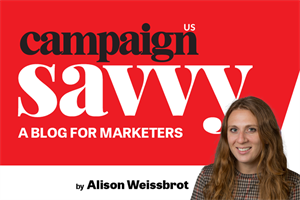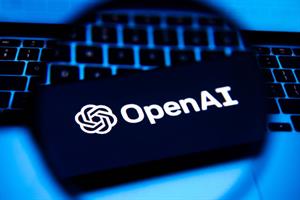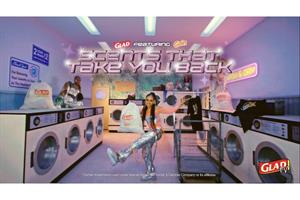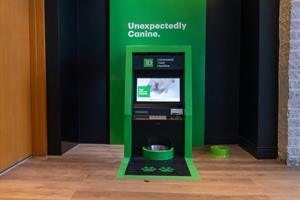AI was always poised to disrupt business as we know it. But thanks to huge advancements in the past year, that reality seems closer than ever in advertising. From ChatGPT to Midjourney, AI is proving it can handle creative as well as computational tasks — and that has huge implications for the ad industry.
During a recent Campaign US webinar, creative editor Sabrina Sanchez moderated a discussion between Cheryl Guerin, EVP of global brand strategy and innovation at Mastercard; Jeremy Jones, global group creative director at Mailchimp; and Anthony Yell, chief creative officer at Razorfish, about the impact of AI on advertising.
“[AI tools] will ultimately allow me, as a creative, to deliver more effective work more efficiently, which is the goal of every creative and everybody in marketing,” Yell said. “The implications are wide ranging and broad relative to the impact on the agency space from how we can gestate creative ideas that are much bigger than what we can do today, the efficiencies gained in terms of production and the variables relative to distribution of media as well as optimization.”
AI tools in practice
While AI can’t replace human creativity, “it can be an enhancer to the creative process,” Guerin said. For example, the introduction of an AI music generator at Mastercard’s Artist Accelerator showcase did not eliminate the mentoring and human experience at the event but “enabled [musicians] to use their art and bring it to life in a really easy-to-learn way,” she explained.
At Mailchimp, the focus is on “adoption and experimentation as these tools have come online,” Jones said. “It is like that new frontier, and it's going to open up opportunities for everyone.” The first step is to understand what can and can't be done with the tools in order to move from a foundation to bolster creative output, he explained.
“There's a cornucopia of tools developing at a rapid pace, so we're playing with every single one we can get our hands on to understand the implications and also how to use them in different ways,” Yell added. “[AI] is a creative co-pilot, it can be a creative companion and a collaborator to unlock your imagination to a scale that no other tool that's ever existed in the creative realm has ever done before.”
What you get out of AI depends on what you put in. When using a ChatGPT-powered tool to do a Play-by-AI rundown of the Super Bowl, Mailchimp found that ”prompting was a unique skill set and an amazing practice to figure out how you want it to show up in the world,” Jones said.
In another example, Mailchimp produced with Midjourney an image of a giant, tangled web of people from concept to visual in a day as opposed to weeks with Photoshop. “It allowed us to free up and focus more on the more important things with the campaign,” Jones said. “It really has become the extra person in the room, whether it's a copywriter, art director or even a desk researcher.”
Recognizing the opportunities and challenges of image and copy generating tools, Mastercard is creating a policy for how agencies can use AI on its behalf and a governance structure. “It enables us to make sure the data we're using isn't going to inadvertently do something that we would all regret later,” Guerin explained. “You need to have a foundation of what you're going to be and what you're not going to be, making sure ethics is addressed, and that you don't inadvertently put a competitive set of information out there, that goes out into the open AI domain.”
Adoption on the client side
With the new technologies, it can fall on agencies to highlight the strategic value of AI tools. This technological evolution is similar to Photoshop for designers or editing software for film editors. “Even though it is enhancing or making us more efficient, there still needs to be that focus on the craft of it all,” Jones explained. “The human side of things is still the heart of it all, the feeling, the emotion, the making, the connections.”
From changing organizational precepts to incubation processes and market efforts, “there's a range of things we do with a range of clients that have different adoptions and openness to leaning in,” Yell said. As a member of The Coalition for Content Provenance and Authenticity (C2PA) and the Content Authenticity Initiative (CAI), “We're starting to put some rules in place around how to manage the creation of work in this space in a responsible manner,” he explained.
Mastercard, for example, uses tools to determine fraudulent and real transactions, track micro-social trends for ad placement as well as respond to creative proposal requests, Guerin said. The key is to “test and learn and determine if there are any ethical issues along the way, any bias issues, anything going on, and if not, we can go ahead and move forward and advance the scale globally.”
Another example, Intuit Assist for Mailchimp, is designed to help small business clients generate content, personalize marketing and learn more quickly, Jones explained. “As creatives, the more that we can understand its secret powers, the more we can pass off those learnings onto our own product and our customers' businesses,” he said.
At Razorfish, “every single client is leaning in in one way or another to explore not only how [AI tools] can positively impact its marketing, but how it can use these technologies to enable new products and services that are also principally part of its customer experience,” Yell concluded. “Creativity is about utilizing new tools to unlock greater creativity.”


.png)
(22)(1)-2.png)






